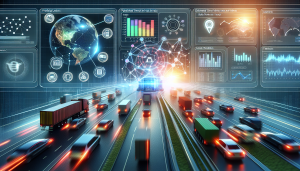 UseCasesFor.ai
UseCasesFor.ai
Choose Topic
 UseCasesFor.ai
UseCasesFor.ai
AI Use Cases
A collection of over 250 uses for artificial intelligence
A continually updated list exploring how different types of AI are used across various industries and AI disciplines,including generative AI use cases, banking AI use cases, AI use cases in healthcare, AI use cases in government, AI use cases in insurance, and more

Sign up
to receive a PDF containing all the use cases and stay updated with the latest AI trends and news (you can always unsubscribe)
Logistics AI Use Cases

Route optimisation for delivery vehicles
AI algorithms analyse real-time traffic data to optimize delivery routes, minimizing travel time and fuel consumption

Predictive maintenance for fleet management
AI algorithms analyse real-time traffic data to optimize delivery routes, minimizing travel time and fuel consumption

Warehouse layout optimisation
AI can simulate different warehouse layouts to maximize storage capacity, streamline operations, and minimize pick-and-pack times

Loading and packing optimisation
AI algorithms can determine the most efficient way to load shipping containers, minimizing wasted space and reducing shipping costs.

Predictive ETAs for shipments
ML models predict estimated time of arrivals (ETAs) for shipments based on historical data and real-time factors like weather and traffic conditions.

Predictive supply chain risk management
ML models analyse various risk factors, such as geopolitical events or natural disasters, to identify potential disruptions and implement proactive mitigation strategies.

Automated logistic documentation
Gen AI generates shipping documents, such as bills of lading and customs declarations, based on input data and regulatory requirements, reducing paperwork and improving compliance.